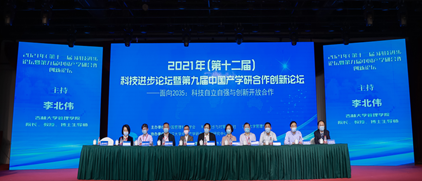Regional Scientific Development
Chen Sihang,Lei Li,Zhou Zhonglin
Environmental regulation, green technological progress and green economic development are the important theoretical and practical issues in the Yangtze River Economic Belt. Existing studies have shown that environmental regulation and green technological progress are important factors affecting the development of green economy, but there are many disputes and no clear conclusions in the academic circles about their mechanism and relationship. With the development of the Yangtze River Economic Belt becoming a national strategy, green development has been determined as the main tone, and the extensive economic growth model with high emission, high pollution and high investment is unsustainable. Therefore, scientifically clarification of the relationship between environmental regulation, green technological progress and green economic development is the basic issue to realizing green development in the Yangtze River Economic Belt, and the research on this issue needs to be further strengthened.#br# Based on the identification of the mechanism of environmental regulation, green technological progress and green economic development, this paper uses the panel data of 11 provinces and cities in the Yangtze River Economic Belt from 2005 to 2019, constructs a PVAR model to test their mutual relationship, and introduces impulse response function to construct the response model of environmental regulation, green technological progress and green economic development, and analyzes the role and influence degree of the three from the static and dynamic perspectives. The advantage of this method is that it combines the advantages of time series analysis and panel data analysis, and can control the unobservable individual effects and time effects caused by spatial changes. More importantly, it can intuitively display the dynamic response of the three in the face of impact. It can clearly describe the conduction mechanism caused by various shocks and observe the relative importance of each random disturbance term that affects the variable.#br# The empirical analysis results show that environmental regulation has a long-term positive effect on the progress of green technological progress and the development of green economy. And green technology progress has a long-term positive promoting effect on environmental regulation, a short-term inhibiting effect and a long-term positive promoting effect on the development of green economy, and green technological progress has a strong impact on environmental regulation and green economic development. The development of green economy has a long-term positive role in promoting environmental regulation and green technological progress, but its contribution to both is small. At the same time, the research also shows that the promotion of environmental regulation and green technological progress on the green economic development is a dynamic process that gradually increases, and will gradually become an important driving force for the development of green economy. Therefore, the study believes that the relationship between environmental regulation, green technological progress and green economic development is relatively complex in the short term, and will form a benign interaction that promotes each other in the long run, and can realize the self-reinforcing effect among various variables. #br# The possible innovations of this paper are as follows. First, this study constructs a new analytical framework, that is, with the help of PVAR model, environmental regulation, green technological progress and green economic development are placed in the same analytical framework, and the three are regarded as the endogenous variables. Second, this study expands the selection of indicators in the current study, that is, it sets up relevant indicators in the design of environmental regulation indicators to investigate their indirect effects, highlights the green bias and regional integrity in the calculation of green technological progress indicators, and uses the green total factor productivity considering environmental efficiency in the measurement of green economic development. Third, this study breaks through the limitations of single dimension and static research, that is, it studies the relationship and role between environmental regulation, green technological progress and green economic development from a two-way and dynamic perspective, and carries out Granger causality two-way test and dynamic impulse response analysis between the three, and clearly shows the trend and function degree of the short-term and long-term relationship between the three.#br#
